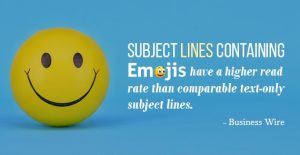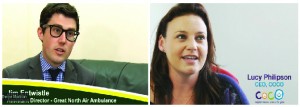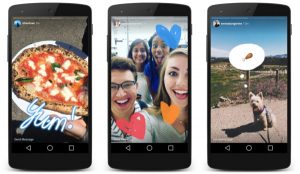You’ve created a great product — but do people love it? Columnist Tim Ash gives advice on evoking your customers’ emotions to increase conversions.

Illogical and unlikely as it seems, decision-making in humans is ruled by the emotional brain. People decide first based on how they feel, and then justify that decision with what seems like a consciously balanced weighing of pros and cons.
Savvy marketers know that establishing an emotional connection with their visitors and/or creating a strong feeling of desire or pain (or other emotion) can be a powerful weapon in the conversion arsenal.
Surprisingly, many marketers still don’t fully understand just how much feeling (and how little logic) goes into the average purchase decision. As a result, they create websites that present very compelling reasons why a customer should choose to do business with them – and then wonder why they haven’t achieved the success expected.
Marketers just haven’t figured out how to use emotions to bring the “wow” into their websites. Fortunately, it’s actually quite simple to create emotional connections with visitors, even for the most boring of industries. Below are seven ways you can use emotion to drive conversions on your site.
1. Reinforce Feelings Of Self-Efficacy
If you’ve read Steve Krug’s Don’t Make Me Think, then you know that website visitors avoid mental heavy lifting. You can chalk this up to the human brain being innately lazy: people instantly dislike web pages that require too much figuring out.
Unless you offer a very exclusive and desirable product or service, most folks would sooner hit the back button than jump over hurdles to find or do something on your website.
But the real emotional cost of a complicated website goes beyond laziness, aggravation or frustration. Not being able to find or accomplish something on a website actually influences a person’s perception of self-efficacy.
Psychologist Albert Bandura suggests that self-efficacy is the confidence that people have in their own capabilities for executing actions that are required by certain situations. The more confident your visitors are that they can accomplish something on your site, the more likely they are to follow through with that action or behavior.
From a self-efficacy standpoint, a website that seems overly complex or is burdened with visual noise will affect visitors’ perception of how easy or difficult a certain task will be to accomplish. Build up your visitors’ confidence by designing your site in a way that increases the perception of ease.
Remove clutter and distractions, have a clear and sensible navigation that people find easy and non-threatening to use, and make your calls-to-action pop. Reinforcing the feeling of self-efficacy is a simple yet powerful emotional trigger that will help move visitors toward conversion.
2. Leverage The “Halo Effect” In Your Marketing
Common sense dictates that you cannot build a relationship without trust. If you want to convince your visitors to put even a bit of emotional (or financial) investment into your brand, company, or products, you must first gain that faith.
And you have to do that without ever getting the chance to meet them face to face, look them eye or shake their hand. In fact, few of the traditional trust-building activities involved in human relationships can be called upon in an online transaction.
Fortunately, the human brain’s fondness for shortcuts gives marketers the opportunity to build trust without jumping through the normal hoops.
One proven technique is the “halo effect” — people’s tendency to form a positive impression of something because it is associated with something else that they know and like.
The halo effect is at work when companies use a celebrity spokesperson to represent their brand, or when they display the logos of well-known customers or media outlets that have covered them.

Wrike utilizes the Halo Effect by putting well-known brands on its site.
You can also put the halo effect to work by prominently featuring uniquely positive aspects of your business or company that will appeal to a broad base of prospective customers.
For instance, if you have a CEO who is well-known for his warm personality or expertise, then make him a prominent figure in your marketing channels. If your team members are active in charity work or have cool and interesting hobbies, feature them in your social media.
You won’t only be giving your company a human face (humans are more likely to trust other humans than a faceless organization, after all), you’ll also be laying down the foundation for a more solid relationship with your customers by allowing these positive attributes to create a halo over the rest of the organization.
3. Activate Positive Feelings
An interesting finding by psychologists like B.F. Skinner is that human behavior, particularly our responses to certain stimuli, can be conditioned. Positive behaviors can also be reinforced and encouraged with rewards or incentives.
This is most likely the rationale behind the use of discount codes or coupons by many marketers. We know that the desire to buy will be stimulated by the coupon, and the savings from the discount acts as the reward for the desired behavior.
When people are rewarded, it activates pleasure centers in the brain. So aside from coupons, you can use instant gratification to generate positive feelings.
If you’re in e-commerce, try giving away some freebies that they can immediately enjoy with their purchase. If you’re in B2B, an e-book or buyers’ guide that’s available for instant download might do the trick.

Clinique stimulates customers’ desire to buy – and also activates their brains’ pleasure center – by rewarding them with free items.
Activating the brain’s reward center doesn’t necessarily have to involve discounts or expectations of material gain. Neurobiologists, for instance, have found that altruism – engaging in selfless acts like donating to charity or supporting a cause – does the exact same thing to the pleasure centers of the brain.
No wonder then that the success of companies like The Body Shop or Tom’s Shoes is built on their image as do-gooders. By highlighting their charitable work or ethical sourcing activities in their marketing activities, these companies let their customers feel that they’re supporting a good cause while getting themselves something special.
4. Learn & Meet Your Visitors’ Needs
As marketers, we know that what we sell must genuinely meet the needs of our visitors. Otherwise, we’d end up with frustrated or even angry customers who feel they’ve been deceived.
But, having the right product/service mix is only part of the battle. You’ve also got to create messages that convince visitors that you understand what drives them — and that you know how to make their lives better.
So, how do you craft messages that resonate with what visitors really need? The answer may lie in humanist Abraham Maslow’s concept of the hierarchy of needs.
According to Maslow, human needs can be categorized as either low-level or high-level needs. We first work on meeting our low-level or basic needs (e.g., physiological and safety needs) and progress to higher level ones (e.g., social, esteem, self-actualization). Achieving these needs therefore defines our basic motivation for doing things.
To emotionally connect with visitors at a deeper level, learn their primary motivation — that’s a powerful psychological trigger.
If you’re selling a SaaS software, for instance, you could emphasize that it’s not just designed to crunch numbers but to achieve success in the workplace. You can also cater to visitors’ need for esteem, achievement and social belonging by creating exclusive offers or inviting them to participate in your community of users.

Mercedes-Benz taps into customers’ esteem needs by associating its car with their hopes and dreams.
5. Recognize Users’ Changing Personalities
Aside from the hierarchy of needs, marketers must also be aware that their customers’ personalities aren’t stagnant. People change over time as they attempt to adjust to changes in their internal and external environments.
As psychologist Erik Erikson observes, people go through eight stages of psychosocial development spanning a lifetime. Each stage is characterized by crisis, and a person’s ability to resolve these conflicts serves as the antecedent for successful transition to the next stage (e.g., childhood to adulthood).
Understanding the unique aspect of your users’ development as a person helps you become more responsive to their changing needs and priorities. By knowing which stage your target customers are in, you gain insight into their interests and perspectives. It also reveals a lot of their deeper motivations. Case in point: the hopes and fears of visitors with young families will be different from those of empty nesters.
Understanding the concept of psychosocial development can help you personalize web experiences and create more effective offers.
For instance, you can segment visitors and customers based on where they are in their lifecycle and tailor your messages accordingly. That way, you’re not sending a generic message to customers who are, for instance, just starting with their careers and those who are already decision-makers in their companies.
6. Manage Cognitive Dissonance
As human beings, we have a deep need for consistency in our beliefs, values and actions. That’s why we become confused and question even our own behaviors if these are incompatible with our existing beliefs.
In psychology, this experience is called cognitive dissonance, and it creates tension in decision-making because people want to make a choice that is in line with their values.
Nobody wants to have buyers’ remorse, and that anxiety alone can be enough to keep a visitor from converting. Minimize the fear of regret by offering testimonials from real customers that provide specific compliments about their experience of working with your company.
Display a no-questions-asked purchase guarantee and clearly demonstrate your commitment to customer service, even after the sale. All of these little things can help ease the emotional friction caused when someone is on the path to conversion and needs a little extra emotional support to feel confident in that they’re making the right choice.
7. Nurture The Conditions For Attachment
Like many marketers, you’ve probably wondered how some companies have managed to build an extremely loyal customer base – and continue to maintain and attract more loyalty over the years. The answer may lie in the psychological theory of attachment.
Psychologists explain that attachment is carefully cultivated through the combination of consistency, responsiveness and trustworthiness. As you can see, all of the concepts I’ve outlined above ultimately build up to this.
If you want to establish an emotional connection with your visitors, you must earn their trust, ensure that you are helping to fulfill an important need, and provide stress-free, enjoyable experiences.
Take a look at the companies and sites you love (or envy) and you’ll find that they excel at doing these things, thereby creating an emotionally invested customer base.
Apple, for instance, rebuilt its brand as the maker of the highly-dependable Mac. They’ve successfully marketed the Mac not as an ordinary PC but as a lifestyle product. They’ve achieved consistency by designing other products such as the iPhone and iPad based on the Mac.
There, you see, is the recipe for attachment: trust, responsiveness, and consistency. And that is the reason Apple has legions of fans eager to camp outside their stores during every product launch and willing to defend the brand from naysayers.
So, if you want the secret to make customers convert again and again, learn how you can apply the attachment formula for your company and products.
Marketing Land – Internet Marketing News, Strategies & Tips
(253)






